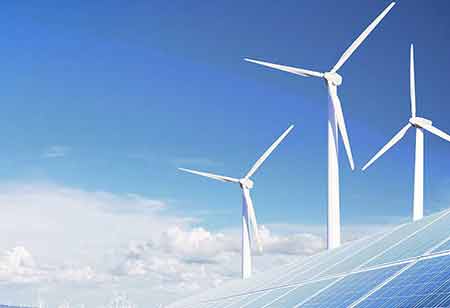Thank you for Subscribing to Energy Business Review Weekly Brief
Importance of Geothermal Energy

By
Energy Business Review | Monday, January 10, 2022
Stay ahead of the industry with exclusive feature stories on the top companies, expert insights and the latest news delivered straight to your inbox. Subscribe today.
Geothermal energy is the carbon-free, renewable, sustainable energy source that gives a consistent, continuous supply of heat that can be applied to homes and office buildings and generate electricity.
Fremont, CA: The heat from the earth’s subsurface is known as geothermal energy. It can exist in the minerals and fluids underneath the earth’s surface and the hot molten lava called magma. Wells a mile deep are drilled into underwater ponds to approach steam and hot water, which can then be employed to fuel turbines attached to electricity generators. Dry steam, flash, and binary geothermal power plants are the three sorts of geothermal power plants.
Around 20 countries employ geothermal energy. The United States is the world’s foremost geothermal energy producer and home to its largest geothermal field. The ‘The Geysers’ sector in California spans 117 square kilometers and includes 22 power plants with a joint installed capacity of over 1.5GW. The energy supply is still extensively used in Iceland, which has been employed since 1907. Characterizing itself as a ‘pioneer’ of geothermal power, the nation produces 25 percent of its energy from five geothermal power plants. This is because of the country’s 600 hot springs and 200 volcanoes.
Geothermal energy is the carbon-free, renewable, sustainable energy source that gives a consistent, continuous supply of heat that can be utilized to heat homes and office buildings and generate electricity, according to a survey. Geothermal energy ejects just one-sixth of the CO2 discharged by a natural gas plant, and it is not an unstable energy source such as wind or solar. It can generate at least 35GW and as many as 2TW.
The energy source still has certain drawbacks. Despite low CO2 emissions, geothermal has been akin to sulfur dioxide and hydrogen sulfide emissions. Geothermal power plants, comprising fracking, have caused minor tremors and high initial construction costs in their work areas. Owing to its activity over the tectonic plates of the earth’s surface, it is frequently referred to as the most location-specific energy source familiar to man. Consequently, it is restricted to countries like the United States and Iceland, including Kenya and Indonesia.






